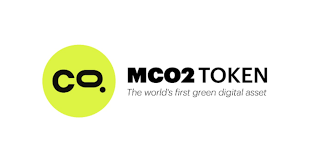MCO2, short for Moss Carbon Credit Token is a carbon credit token that allows users to contribute to the fight against climate change.
How the fight against climate change grew into a multibillion-dollar industry.
According to Ecosystem Marketplace, a market journal maintained by the environmental finance research group Forest Trends, it’s a hot market, reaching all-time highs in volume and on course to be worth $1 billion by 2021.
But what is the significance of carbon credits? And what difference does it make whether they’re used or not? A carbon credit is a permit that reflects one tonne of CO2 eliminated from the atmosphere.
Carbon credits are most commonly generated through agricultural or forestry operations, but they can be generated by almost any initiative that cuts, avoids, destroys, or catches emissions.
The cap is the maximum amount of greenhouse gases that a government will allow to be emitted into the atmosphere, and emitters must trade in order to stay inside that limit.
Article 6 of the 2015 Paris Agreement assigns national leaders the job of determining this on a global scale.
Regulators, corporations, and environmentalists have questioned the globalization of a carbon cap-and-trade market.
According to a September estimate from Ecosystem Marketplace, the voluntary market is on track to hit a new high of $6.7 billion by the end of 2021.
What is the pushback? Critics of the voluntary market, in which a corporation purchases carbon credits from a business outside of a regulated exchange, argue that this does not reduce the overall quantity of greenhouse gases emitted by buyers.
According to Bloomberg, one investment firm pays farmers to transform their fields into trees and then sells the credits to corporations.
For example, FIFA, the world soccer governing body, purchased credits to offset emissions during the World Cup in Brazil.
Microsoft, for example, has proclaimed its goal of becoming “carbon negative” by 2030 and has contracted 1.3 million carbon offset credits as part of that endeavor for 2021.
When investing in carbon credits, it’s critical to understand what you’re getting into, just as it is with any other investment.
The good news is that because carbon credits can be purchased through ETFs, they are an accessible investment that everyone can add to their portfolio.
In the last seven days, the price of Moss Carbon Credit has climbed by 28.08 percent.
